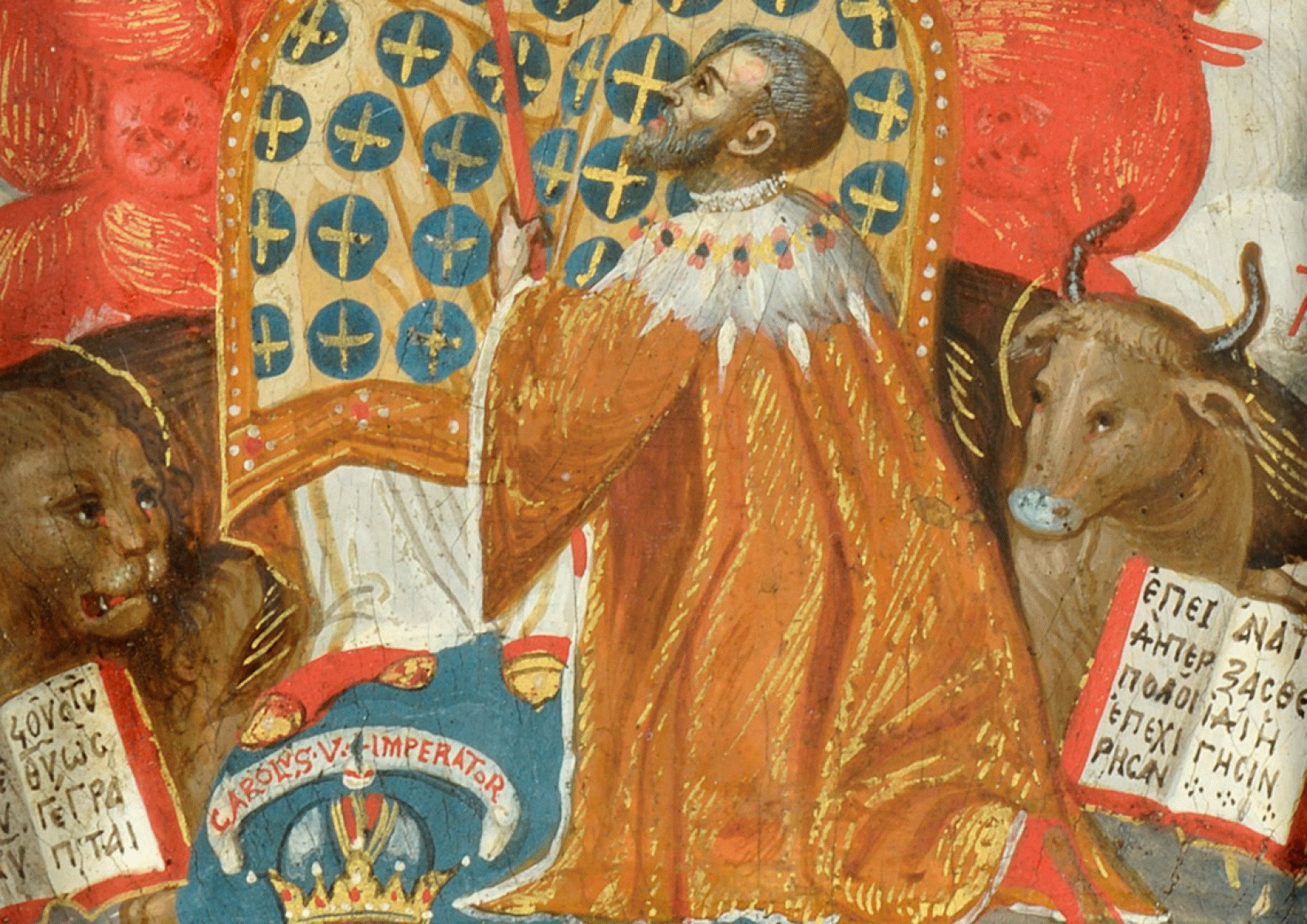KHI 2021+ Lecture Series
Michele Bacci: Charles V and the Pantokrator

Charles V, detail from a painted tabernacle, Crete, ca. 1550. Private collection, Australia
In the fifteenth and sixteenth centuries, painters’ workshops of Candia, on the Venetian-ruled island of Crete, became specialized in the massive production of icons, made for a distinctively international market. Strongly appreciated also in Western Europe, they displayed a rather large repertory of more or less conventional types and compositions, rooted in Byzantine Palaiologan tradition, but they also happened to be adapted, transformed, and made suitable for the specific, sometimes even idiosyncratic needs of their users. Not infrequently, formulas stemming from both contemporary and earlier Italian arts were appropriated and adapted to the conventions of icon-painting, and scholars have often assumed that this aimed at meeting the visual habits of Western viewers. Nevertheless, the picture is much more complex and often difficult to evaluate, as is shown by the number of works that escape easy taxonomical classification.
A case in point is a previously unknown work that was recently exhibited at the Morsink Icon Gallery in Amsterdam, where Christ Pantokrator, rendered as high priest in keeping with the distinctively Orthodox theme of the Megas Archiereus, is shown worshipped by the Holy Roman Emperor Charles V. The present paper aims to reconstruct the specific circumstances under which this painting came to light and to analyse the ways in which the combination of different forms came to convey a visually efficacious message.
Michele Bacci is Professor of Medieval Art at the University of Fribourg, Switzerland, and a member of the Academy of Europe. He is the author of numerous studies on the cultural and art-historical contacts of East and West in the Middle Ages and on the history of the religious practices associated with cult-objects and holy sites. His many books include Il pennello dell’Evangelista (1998), Pro remedio animae (2000), Lo spazio dell’anima (2005), San Nicola il Grande Taumaturgo (2009), The Many Faces of Christ (2014), and The Mystic Cave. A History of the Nativity Church in Bethlehem (2017). His most recent book – Veneto-Byzantine Interactions in Icon Painting (1280-1450), in Greek – was published by the Academy of Athens (2021).
This talk is part of the KHI 2021+ Lecture Series, organized by the doctoral and postdoctoral fellows, in collaboration with scientific staff and senior scholars of the Institute. It is envisioned as a forum to reflect on the futures of Art History through conversations with innovative voices in the discipline, working in different areas but sharing methodological concerns.
30. April 2021, 15:00 Uhr
KHI 2021+ Lecture Series
The event takes place online.
Hinweis
Diese Veranstaltung wird durch Fotografien und/oder Videoaufnahmen dokumentiert. Falls es nicht Ihre Zustimmung findet, dass das Kunsthistorische Institut in Florenz Aufnahmen, auf denen Sie erkennbar abgebildet sein könnten, für die Veranstaltungsdokumentation und Öffentlichkeitsarbeit (z.B. Social Media) verwendet, bitten wir um eine entsprechende Rückmeldung.


